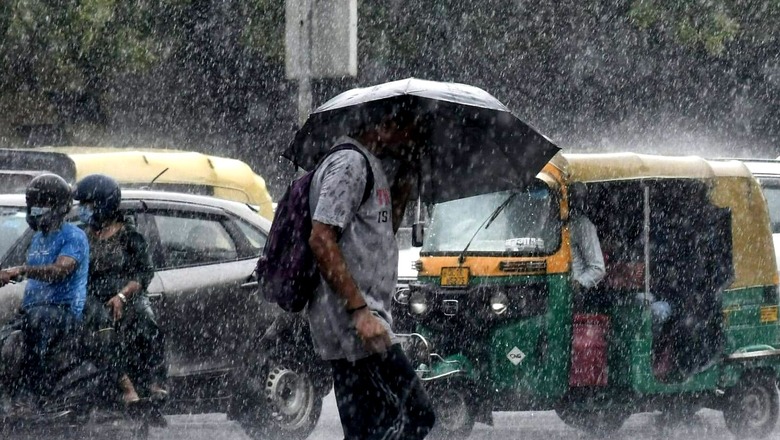
views
After witnessing the highest February rains and record heatwaves in April, Delhi saw its coolest July in the past five years, recording a mean temperature of 35.4 degrees Celsius. Earlier in 2019, the national capital had witnessed 35.3 degrees in July.
The city recorded unusual rains in January and February, record heatwaves in April and May and heavy downpours in July. The pollution index also kept fluctuating between extremes as the city saw its cleanest air in July after a poor performance in the first six months.
The national capital has been experiencing extremes recently, with new weather records seen this year. News18 takes a look at some of the extreme record-breaking conditions in the capital this year.
Rainy July
The Safdarjung base weather station in Delhi witnessed 19 rainy days in July, making it highest number recorded in last 11 years. July recorded excess showers of 141 percent as it received 507.1 mm rainfall, according to the IMD.
The usual number recorded in the month is just nine. The frequent rains in the capital also helped clean the air and Delhi’s air was the cleanest since July 2020. It was also the second cleanest July since 2015 when the Central Pollution Control Board started measuring Air Quality Index.
Most Heatwaves
Delhi has also recorded severe heatwave conditions this year. According to the India Meteorological Department, so far there have been 25 days in this season, when the maximum temperature was recorded at 42 degree Celsius or more in the national capital. This is the longest period of heatwave since 2012, when the national capital recorded such high temperatures.
It also saw a new record on May 15 as the mercury rose to 49 degrees-mark in Mungeshpur near the Haryana border, highest since May 1966. Previously, Delhi’s highest-ever temperature recorded was 45.6 Celsius in April 1941.
February Rains
Delhi recorded an unusually high downpour in February as the city recorded 28.7 mm of rain. The city also witnessed hailstorm along with the rain in the month. The national capital has not seen this much rain since 2014.
In 2014, Delhi had received a total rainfall of 48.8 mm in February. The average rainfall in Delhi during this month is usually 18 mm. However, this year’s excess rainfall in February is 85 percent more than normal.
Poor Air Quality This Year
In November last year, a thick layer of acrid smog hung over Delhi-NCR as residents flouted the firecracker ban pushing the capital’s 24-hour average air quality index for the day after Diwali to 462, the highest in five years. In Noida, the 24-hour AQI was 475, the highest in the country. The neighbouring cities of Faridabad (469), Greater Noida (464), Ghaziabad (470), Gurgaon (472) also recorded ‘severe’ air pollution levels.
The city has not recorded even a single “good” air quality day with an AQI of 50 or less in the first six months this year, according to government data presented in Rajya Sabha. It has, however, logged seven “satisfactory” and 47 “moderate” air quality days during this period.
However, record rainfall, frequent western disturbances and strong winds made this January the cleanest in Delhi since 2015, when the AQI was recorded and put in the public domain.
Delhi’s average AQI in January was 279, much lower than the 324 in 2021. On two days, the air quality was ‘satisfactory’, which is unusual for this time of the year.
Read all the Latest News and Breaking News here


















Comments
0 comment